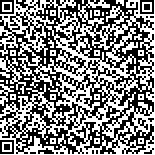| 摘要: |
| 为掌握阿根廷滑柔鱼繁殖特性, 根据2021年在西南大西洋公海采集到的阿根廷滑柔鱼样本进行计数和分析雌性成熟个体有效繁殖力, 并利用能量密度测定技术测定分析其有效生殖投入。结果显示, 阿根廷滑柔鱼雌性成熟个体的平均胴长为(244.90±16.36) mm, 平均体质量为(295.16±64.85) g。雌性成熟个体的有效繁殖力为24 363~102 633粒卵母细胞, 平均有效繁殖力为(63 158.49±16 782.00)粒卵母细胞; 卵子能量密度值为25.01~26.09 kJ/g, 平均值为(25.71±0.25) kJ/g; 有效生殖投入为219.80~817.06 kJ, 平均有效生殖投入为(465.02±158.71) kJ。在功能性成熟期, 雌性个体的有效繁殖力和有效生殖投入均达到最大值。然而, 自成熟度Ⅳ期至Ⅵ期, 卵子能量密度值、体质量相对有效繁殖力、体质量相对有效生殖投入均没有显著差异。同时, 混合模型结果显示, 雌性成熟个体的有效繁殖力和有效生殖投入均随着体质量增加显著增大, 但与个体体征没有显著相关性。结果表明, 阿根廷滑柔鱼雌性成熟个体的有效繁殖力和有效生殖投入均与成熟体型大小密切相关, 然而不同发育时期的个体具有稳定的单位质量有效繁殖力和单位质量有效生殖投入。 |
| 关键词: 头足类 阿根廷滑柔鱼 有效繁殖力 有效生殖投入 能量密度 |
| DOI:10.11693/hyhz20221100297 |
| 分类号:S931; S932; Q958 |
| 基金项目:国家自然科学基金项目, 41876144号; 上海市人才发展资金项目, 2020107号; 上海市自然科学基金项目, 16ZR1415400号。 |
附件 |
|
| THE EFFECTIVE FECUNDITY AND EFFECTIVE REPRODUCTIVE INVESTMENT IN MATURE FEMALE ILLEX ARGENTINUS |
|
WU Hai-Zhu1, ZANG Na1, LIN Dong-Ming1,2,3,4
|
|
1.College of Marine Sciences, Shanghai Ocean University, Shanghai 201306, China;2.Key Laboratory of Sustainable Exploitation of Oceanic Fishery Resources, Ministry of Education, Shanghai Ocean University, Shanghai 201306, China;3.National Distant-water Fisheries Engineering Research Center, Ministry of Science and Technology, Shanghai 201306, China;4.Key Laboratory of Oceanic Fisheries Exploration, Ministry of Agriculture and Rural Affairs, Shanghai 201306, China
|
| Abstract: |
| To better understand the reproductive characteristics of Illex argentinus, mature female individuals were randomly collected from the catches of commercial jiggers in the high seas area of southwest Atlantic Ocean in 2021, and were used to evaluate effective fecundity and effective reproductive investment. The effective fecundity was estimated as the sum of number of vitellogenic oocytes in the ovary and number of ripe eggs in the oviducts. The effective reproductive investment was calculated as the energy density of ripe eggs multiplied by the effective fecundity, in which the energy density of ripe eggs was determined by using tissue energy density technique. Results show that mature female I. argentinus was recorded an average of mantle length (244.90±16.36) mm, and body weight (295.16±64.85) g. The effective fecundity ranged from 24 363 to 102 633 oocytes, on average of (63 158.49±16 782.00) oocytes. The egg energy density ranged from 25.01 to 26.09 kJ/g, on average of (25.71±0.25) kJ/g. The effective reproductive investment varied from 219.80 to 817.06 kJ, on average of (465.02±158.71) kJ. The effective fecundity and the effective reproductive investment were increased significantly as maturation progressed, reaching peak during the functionally mature stages. However, the egg energy density, the relative effective fecundity by body weight, and the relative effective reproductive investment by body weight did not varied significantly from maturity stages Ⅳ to Ⅵ. In addition, the results of mixed-effects models showed that the effective fecundity and the effective reproductive investment were positively correlated with body weight, in an increasing trend with increasing body weight; but not correlated with body condition that estimated as the standardized residuals of body weight–mantle-length relationship. Thus, the effective fecundity and effective reproductive investment of mature female I. argentinus were closely related to its body size, but individuals showed stability in effective fecundity and effective reproductive investment by body weight. |
| Key words: Cephalopod Illex argentinus effective fecundity effective reproductive investment energy density |
